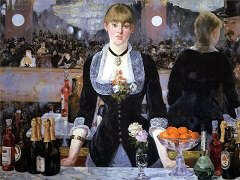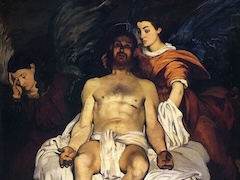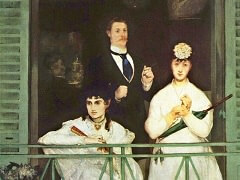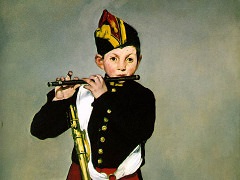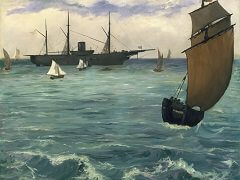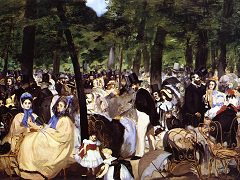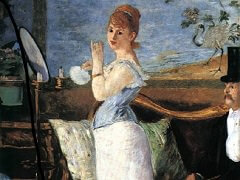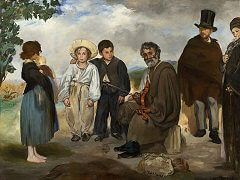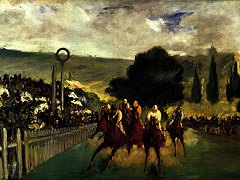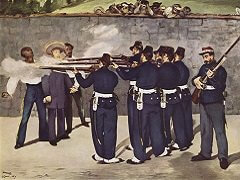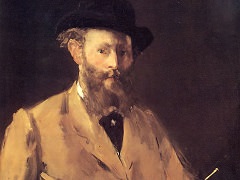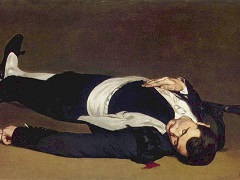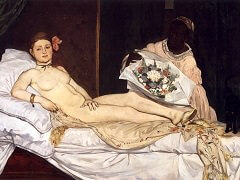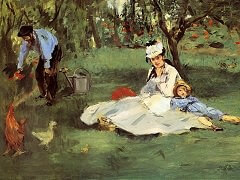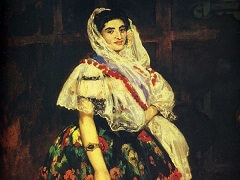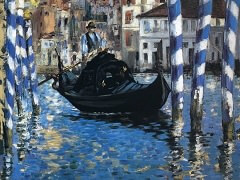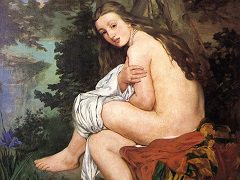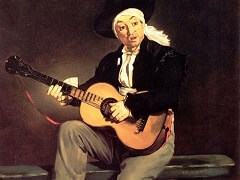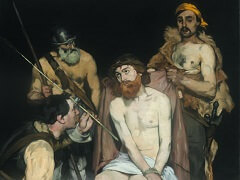Rochefort's Escape, 1881 by Édouard Manet
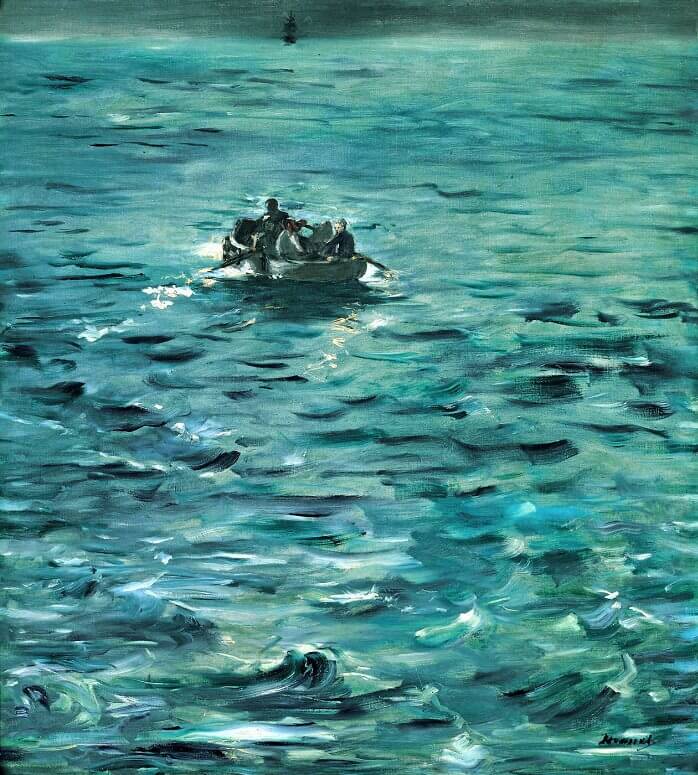
Rochefort's Escape was painted by Manet after December 1880.
Virulently opposed to the imperial regime, Rochefort founded a political newspaper, La Lanterne in 1868. The newspaper, which was published in Brussels, was soon banned. In 1873, the journalist was sentenced to penal servitude for his role during the Commune. His spectacular, swashbuckling escape by sea, in 1874, inspired Manet to paint this strange composition, six years after the event. The artist waited for the Republican victory in the Senate and the Chamber of Deputies in January 1879 and a law granting the communards amnesty, in July 1880, which permitted the fugitive to return to France, before tackling the subject. He intended to enter his painting in the Salon of 1881.
By commemorating an event still fresh in all minds, Manet revolutionised the genre of history painting traditionally restricted to antique or mythological subjects. The barely recognisable hero with his tousled blond hair "like a flaming punchbowl", is here shown at the stern of a tiny dinghy bobbing through the waves. Alongside him are his accomplices, Pain, Grousset and Jourde. The sense of solitude and danger is made palpable by the size of the craft. An electric, phosphorescent sea, painted with small, flicked strokes, floods the entire canvas. It "rises to the top of the frame", where the ship that picked up the fugitives looms on the horizon.
Manet chose a vague technique to represent a six-year-old event which he had not witnessed. But the endless sea superbly conjures up the danger and drama. This paradoxical canvas also expresses his disappointment with Rochefort who had dashed his Republican hopes.

